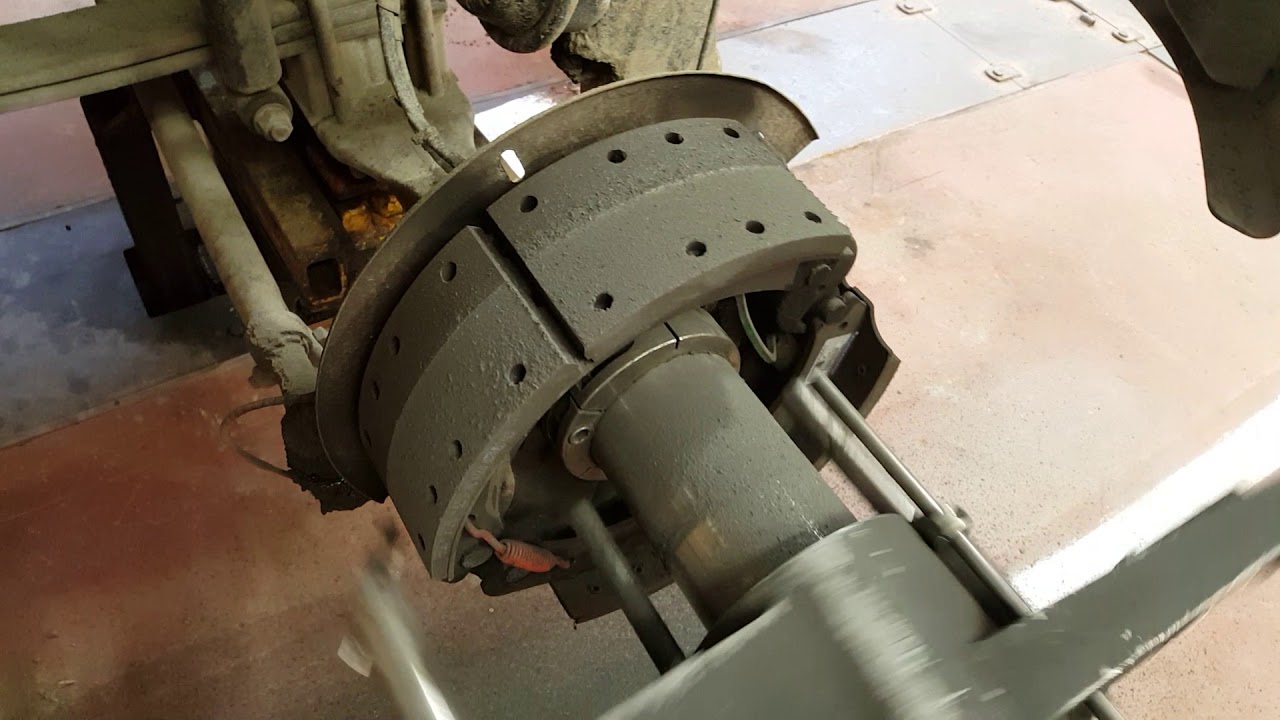School buses are fussy sometimes so fine tuning is required once in a while. In this case the front brakes were grabbing and pulling the bus to one side at slow speeds. The best method to repair this problem is machining the brake shoes and brake drums. It’s not a unusual step to take in the automotive field but heavy vehicles don’t get much of this type of maintenance.
Heavy truck shops do not do this for the simple fact that it costs the customer more money and down time. It’s a fussy operation setting up and waiting for each cut to complete on both sides. This will increase the job time by at least 3 to 4 hours. In our case with a school bus fleet we have the luxury of time and as you can see in the video we have the machining tools that were manufactured in Italy.
This is a machining system that the shop purchased over 20 years ago to machine our front and rear axle brake shoes. The thought was if there is 100% contact between shoe and drum the wear and brake operation would improve. To some degree it does that but there is nothing miraculous about it. Years ago we went back to replacing shoes and drums because of the reduction in cost (made in China and competition) for parts and the time saving factor.
But…sometimes we do have to go through this machining process because of poor product quality. Sometimes the drum can be out of round and far from being true with high spots that cause poor contact between the drum and lining. Also when the drum glazes up there are brake issues like chattering, grabbing and pulling to one side which we can not tolerate with a school bus especially in the winter time with slippery conditions.
This machining process is guaranteed to fix any kind of brake contact problem which saves us a lot of hassle. The original brake parts can be reused after they are machined so the only cost is a couple of wheel seals and labor. The front brakes take less time because of the smaller brake shoes and working area. I strongly back this procedure having lots of experience myself using the equipment.
We used to take brakes apart on new buses and machine them and the drums would require .025 to .030 inch removal of metal to get the drum perfectly true. Eventually we stopped this with new units since there was no issues from factory so why bother if the brakes feel good down the road? There is no way we will be parting with these machining tools that make life easier for us fleet mechanics.







